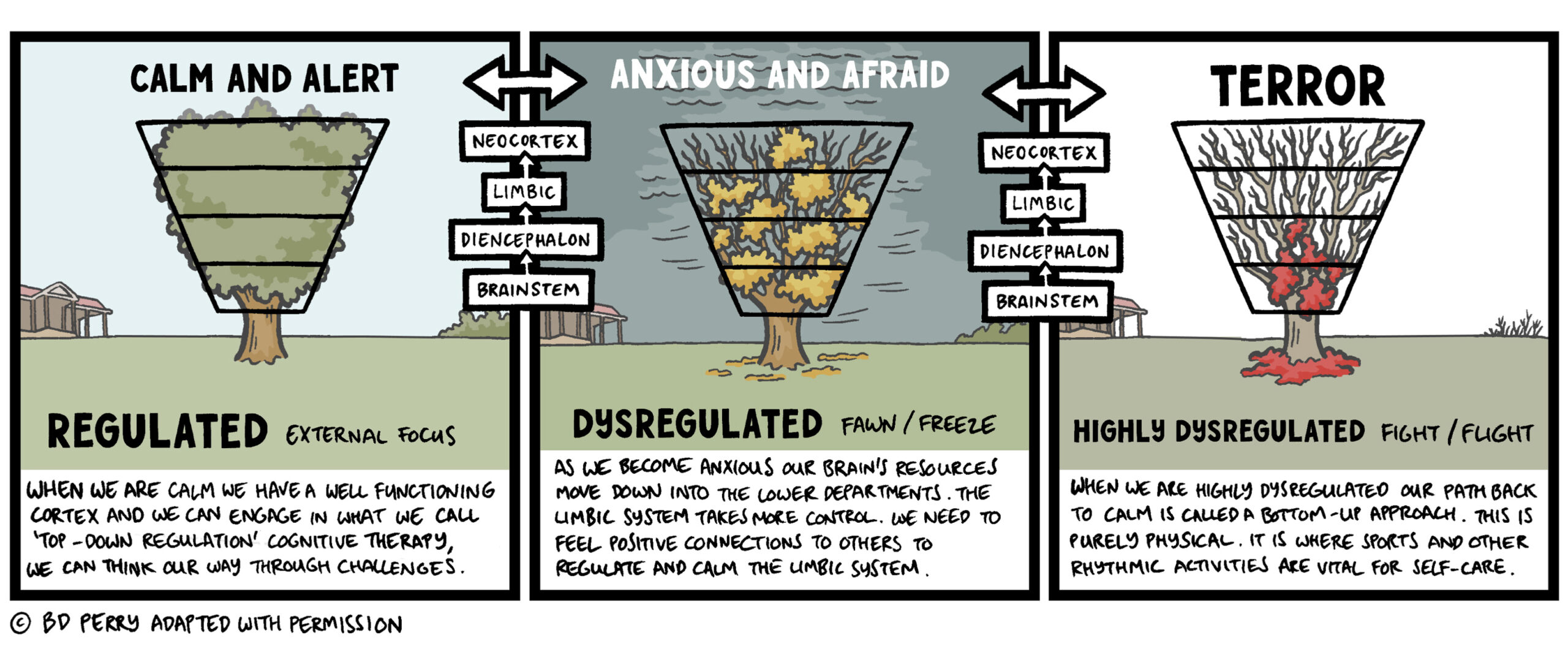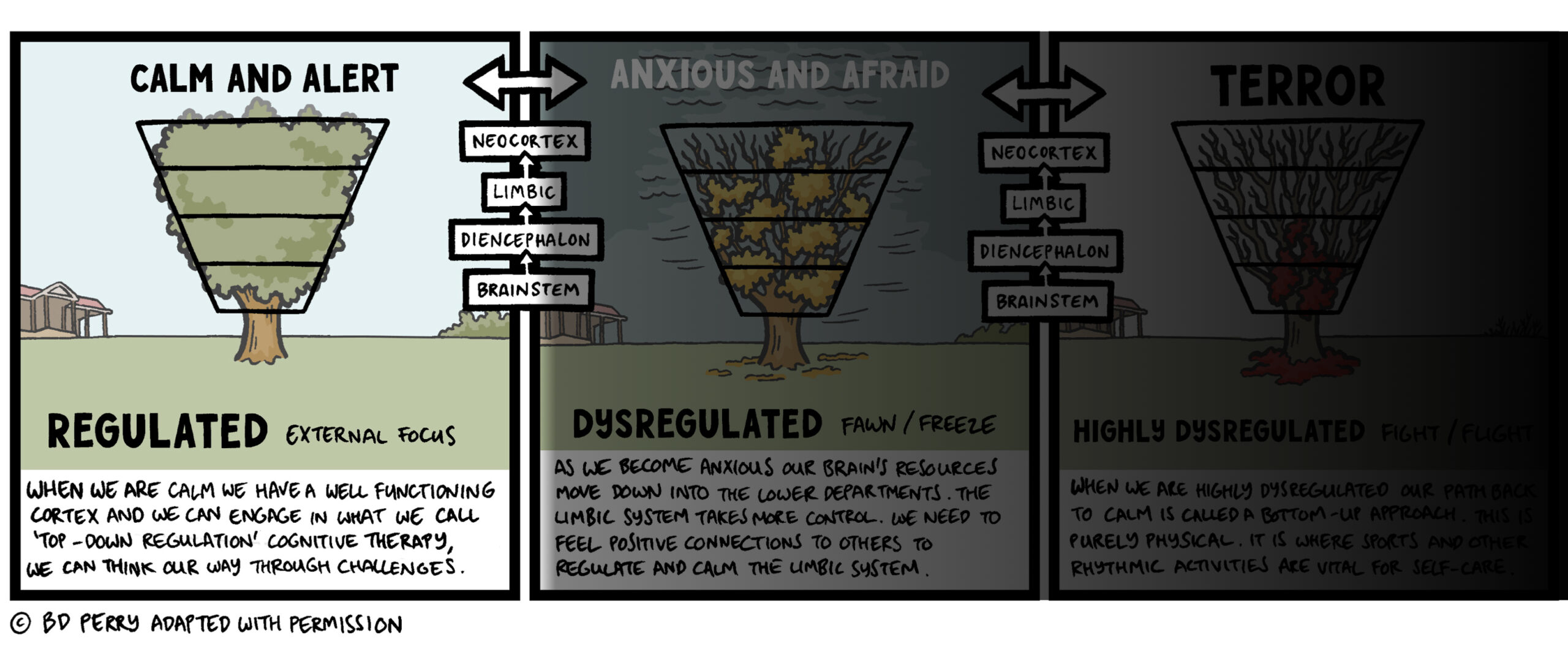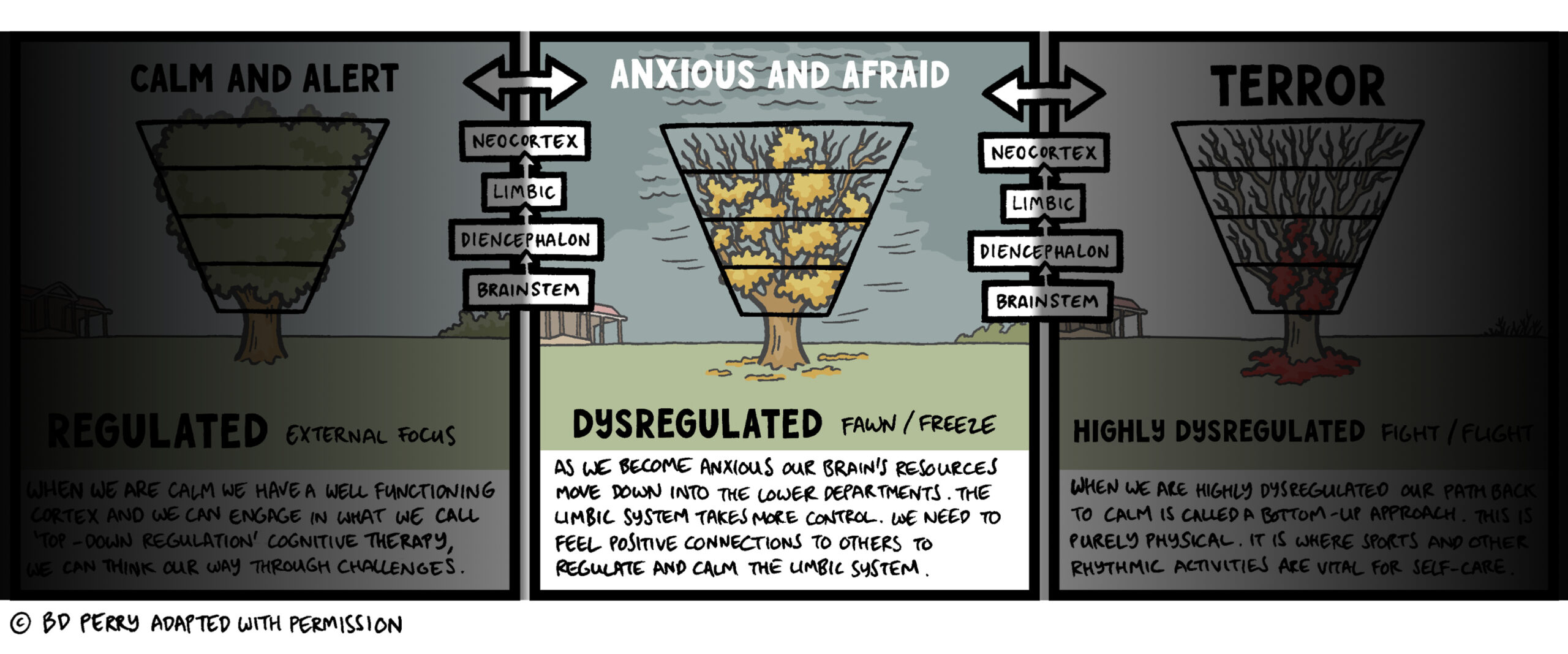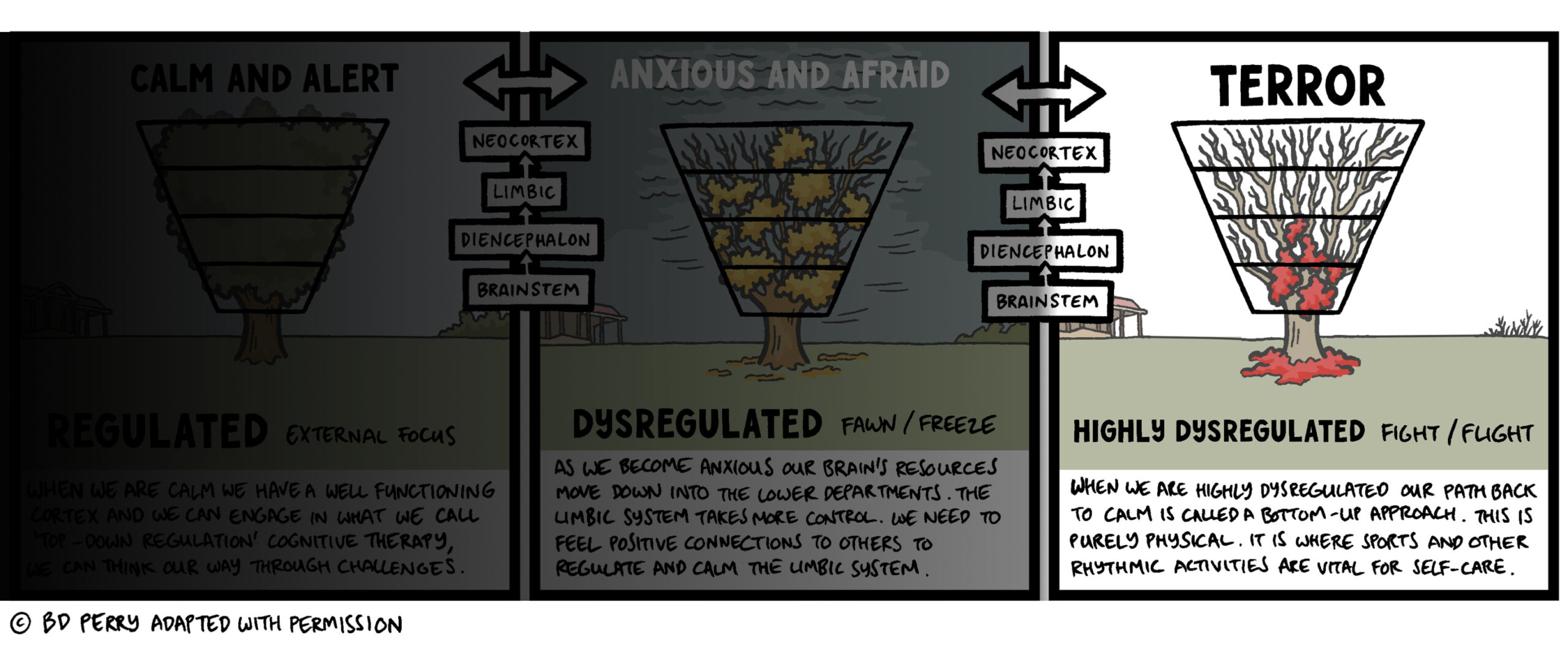
The part of the comic where I got a couple of questions are the Trees.
The trees show where our brains are most active based on how we’re feeling.
The emotions we feel arise based on our circumstance—the external and internal stressors we’re encountering.
How we feel, and what associated thoughts accompany those feelings, can be different for different folks depending on what you experienced growing up—what your auto-brain came to expect to encounter in this world.
Auto-brain works very fast, rapid-response style.

First—healthy green tree: When we are calm the auto-systems plus the Cortex* are active.
*Cortex = the rational, planning, creative part of the brain—the part that is most uniquely human. (Worth noting for the Neuroscience students out there, we’re using ‘Cortex and ‘Neocortex’ interchangeably here)

Scan to the second tree: Stress causes our brain to move energy (fueled by glucose) away from the Cortex towards more base-level fawn-freeze, fight-flight systems. When this response is triggered we have less access to our Cortex and are less able to think clearly. Our decision-making capabilities begin to suffer.
Here, in the Limbic System, to be regulated we need to feel connected to a trusted group. That need for connection boils down basic survival. Humans did not flourish as lone-wolves (neither did wolves for that matter) We did so in cooperating groups: tribes & villages.
To feel disconnected for any reason can—at its most extreme—trigger full existential terror. To be alone in the wilderness is not a recipe for success. It induces more fear. Depression itself drives a sense of alienation and disconnection. When this state is chronic the thought that we will never be useful again can arise and thoughts of suicide can emerge.
If we are experiencing thoughts of self-destruction, we in dangerous territory. Asking for and getting some help is vital.

Scan right to winter tree of doom: We are in full-on stress/panic/fear (my experience of depression has been some hellish chronic, extended, weeks-long combo of these and related feelings and thoughts)
In panic-flight-flight mode, the lower core networks of the brainstem are fully in the driving seat.
This short-term response has evolved to keep us safe when we’re being attacked by a bear or falling into a river. Our adrenaline kicks in and thinking is thrown completely out the window. This is fine for bear attacks BUT we have build this modern world way faster than we can evolve to keep up with. To add insult to injury the way we’ve built it has introduced all manner of extra traumatic crap for our brains to take on when we are young. SO, this is where this system can get really counter-productive and we need to learn to creatively adapt. If there’s one thing humans are good at, it’s creatively adapting, so that’s where I get some hope.
The point here is that when our full-throttle stress response kicks in, what we are SUPPOSED to be doing, is running the hell away from the bear, or fighting for life in the river. Physical things. Working through the chemistry. Nowadays this alarm-system is tripped by all manner of things that don’t necessarily warrant physical responses—rent, mortgage, job security, inequality, the threat of gun violence (mainly in the USA), the apocalyptic news cycle, constant communication, 5000 marketing messages per day, knowledge of our mortality and the list goes on. Ok, stop. Breathe slowly in through the nose. Go for a walk.
Understanding what’s happening is the first step in developing creative strategies to counter these maladaptive natural responses to an insane world.
From the winter tree, physical activity helps us calm—scan back to the left—at that point we can calm further by reconnecting with trusted loved ones. And then—back to our full green tree— back to calm.
Our brains work in this order—and they work fast as a heartbeat and faster than that. Being mindful of it when we’re dealing with our own mental health or that of our loved ones can really help. I’m only telling you all this because I’ve found it helpful in my own life.

I have to say now, to get our brains to be able to remain calmer more often—what’s sometimes called resilience—takes time. When we break an arm we don’t continue to stress it and expect it to heal. Same for brains. We optimize conditions for healing. Easier said than done I know. Those optimized circumstances are not always easily achievable. We get stuck in toxic relationships or social circles. For kids in households with parents reliving generational trauma there is no choice. But as adults we often have more agency than we can see in those moments of turmoil.
The last thing I’ll say is that this knowledge of how our brains work does not stop these thoughts and feelings happening. What’s helped me is understanding how it works practically. That knowledge has helped sort of turn the lights on, so that it doesn’t feel so much like fighting in the dark fog any more. And, over time, it’s helped my body to react less intensely to what used to trigger some major catastrophic feelings.
Although the brain is amazing, it’s not perfect. But what is?
Post-Script Note:
The concepts here are all developed and adapted in partnership with Dr Bruce Perry, author of What Happened to You? with Oprah Winfrey.
Joel from Push to Heal and Megan from Center from Healing and Justice through Sport have been valiant and awesome partners also.
I do want to say that none of the work is intended to answer all problems for everyone, nor does it claim that rationally understanding brain processes will make difficult emotions magically disappear. I’ve heard it said that ‘childhood lasts a lifetime’. That is one of the truest statements there is. All I’m saying is that understanding the processes for me has just helped me be more intentional about how I work through things when they inevitably arise.
What I’ve found is that depending our predisposition we are more or less likely to get into the states further to the right here. Over time, with intentional work, it is possible to reduce the frequency and intensity of these responses that our childhoods set us up for. That is the main point I’ve found most helpful. I only share in the hope that over time, with effort, others can too.
Thanks John for sharing about your struggles and also your research. Two books you mentioned in a previous post have helped me understand what happens when my anxiety takes over. It also helps to know I’m not broken but have become programmed to react in certain ways. I appreciate what you’re doing in these posts.